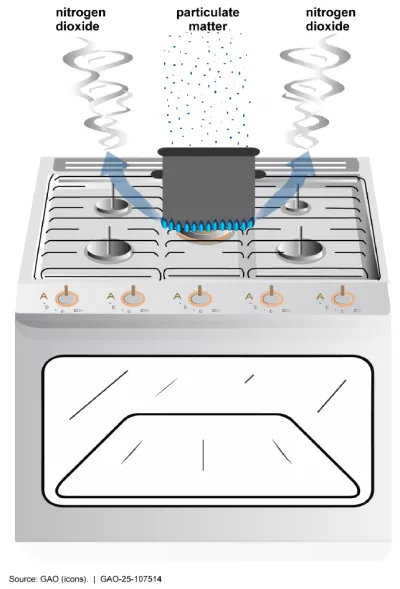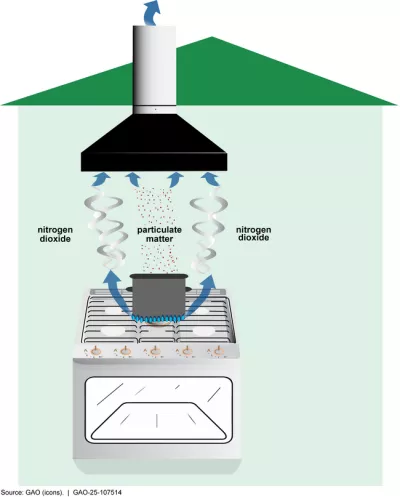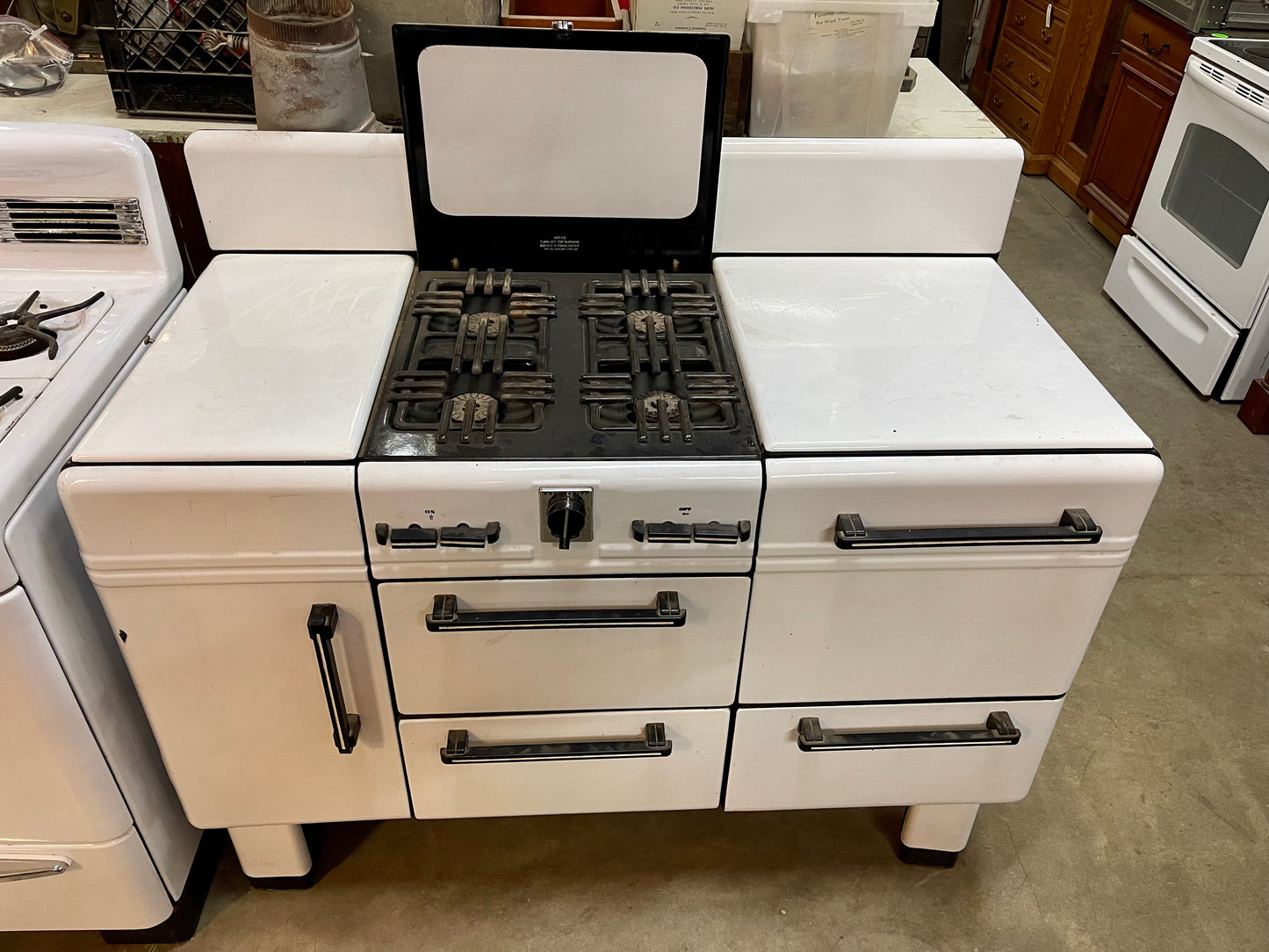RadishRose
SF VIP
- Location
- Connecticut, USA
Skip to main content

U.S. Government Accountability Office
Posted on March 25, 2025
Millions of Americans have gas stoves in their homes. While some swear by them, others have concerns about their health risks. We recently looked at what some experts had to say about gas stove safety. We also reviewed what is being done to improve gas stove safety.
Today’s WatchBlog post looks at our report.
Gas Stove Health Concerns

But can gas stove use make you sick?
It depends. Experts agree that a malfunctioning stove can produce dangerous amounts of carbon monoxide. However, experts disagree about the extent to which health issues stem from gas stove use alone.
For example, one study on nitrogen dioxide—a respiratory irritant—found a correlation between gas stove use and increased asthma risks in children, and suggested that nitrogen dioxide production could be a contributing factor.
A different study argued that family medical history and other factors would need to be more effectively accounted for before associating asthma with gas stove use alone.
If you’re worried about these risks and have a gas stove, there are options to make gas stove use safer. One of the best ways is to cook on the back burners and use a range hood that ventilates gases and debris to the outside. If you have a range hood that doesn’t vent to the outside, be sure to change or clean the filter regularly. Opening windows while cooking can also help.
External Ventilation of Gas Stove Emissions

While the standards set by these organizations are voluntary, major retailers, as well as state and local building codes, generally require that new stoves follow their guidance.
At the federal level, the Consumer Product Safety Commission (CPSC), a government agency, works collaboratively with standards development organizations to improve the safety of gas stoves. It has the authority to create mandatory standards if it believes voluntary standards are inadequate.
CPSC has taken actions to help ensure manufacturers meet safety standards. For example, CPSC recalled about 60,000 units of a particular gas stove product in 2022 and 2023 after discovering that it could emit dangerous levels of carbon monoxide while in use.
The Environmental Protection Agency (EPA) has also promoted research on indoor air quality. And both EPA and the Department of Housing and Urban Development (HUD) have provided guidance recommending that gas cooking appliances be vented to the outdoors, if possible.
Finally, manufacturers are also taking steps to address safety concerns. Gas stove manufacturers have made a number of safety improvements over the past 25 years, including the removal of pilot lights, the development of automatic shut off features, and the reduction of surface temperatures.
To learn more about gas stove safety and efforts to improve it, read our full report.

U.S. Government Accountability Office
< WatchBlog: Following the Federal Dollar
Gas Stoves Can Pose Health and Safety Risks—What’s Being Done to Make Them Safer?
Posted on March 25, 2025
Millions of Americans have gas stoves in their homes. While some swear by them, others have concerns about their health risks. We recently looked at what some experts had to say about gas stove safety. We also reviewed what is being done to improve gas stove safety.
Today’s WatchBlog post looks at our report.
Gas Stove Health Concerns

Why do some experts think gas stoves are a health risk?
Indoor pollutants can pose health risks—from headaches to heart disease. Gas stoves contribute to these pollutants by emitting potentially harmful gases, such as nitrogen dioxide, carbon monoxide, methane, and more.But can gas stove use make you sick?
It depends. Experts agree that a malfunctioning stove can produce dangerous amounts of carbon monoxide. However, experts disagree about the extent to which health issues stem from gas stove use alone.
For example, one study on nitrogen dioxide—a respiratory irritant—found a correlation between gas stove use and increased asthma risks in children, and suggested that nitrogen dioxide production could be a contributing factor.
A different study argued that family medical history and other factors would need to be more effectively accounted for before associating asthma with gas stove use alone.
If you’re worried about these risks and have a gas stove, there are options to make gas stove use safer. One of the best ways is to cook on the back burners and use a range hood that ventilates gases and debris to the outside. If you have a range hood that doesn’t vent to the outside, be sure to change or clean the filter regularly. Opening windows while cooking can also help.
External Ventilation of Gas Stove Emissions

What’s being done to make gas stoves safer?
Many states, localities, and retailers require gas stoves to meet certain safety standards. There are also several organizations that set voluntary manufacturing standards. These organizations are typically comprised of industry representatives, researchers, experts, and government entities. They develop standards to protect against accidental burns and prevent defects in stove design that can lead to carbon monoxide exposure, among other safety measures.While the standards set by these organizations are voluntary, major retailers, as well as state and local building codes, generally require that new stoves follow their guidance.
At the federal level, the Consumer Product Safety Commission (CPSC), a government agency, works collaboratively with standards development organizations to improve the safety of gas stoves. It has the authority to create mandatory standards if it believes voluntary standards are inadequate.
CPSC has taken actions to help ensure manufacturers meet safety standards. For example, CPSC recalled about 60,000 units of a particular gas stove product in 2022 and 2023 after discovering that it could emit dangerous levels of carbon monoxide while in use.
The Environmental Protection Agency (EPA) has also promoted research on indoor air quality. And both EPA and the Department of Housing and Urban Development (HUD) have provided guidance recommending that gas cooking appliances be vented to the outdoors, if possible.
Finally, manufacturers are also taking steps to address safety concerns. Gas stove manufacturers have made a number of safety improvements over the past 25 years, including the removal of pilot lights, the development of automatic shut off features, and the reduction of surface temperatures.
To learn more about gas stove safety and efforts to improve it, read our full report.
- GAO’s fact-based, nonpartisan information helps Congress and federal agencies improve government. The WatchBlog lets us contextualize GAO’s work a little more for the public. Check out more of our posts at GAO.gov/blog.
- Got a comment, question? Email us at blog@gao.gov.
Gas Stoves Can Pose Health and Safety Risks—What’s Being Done to Make Them Safer?
Last edited:


